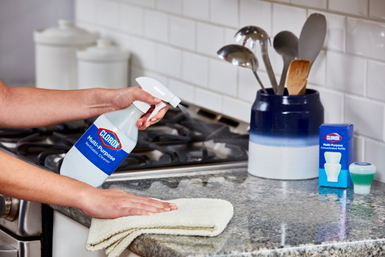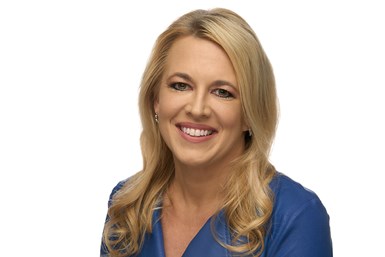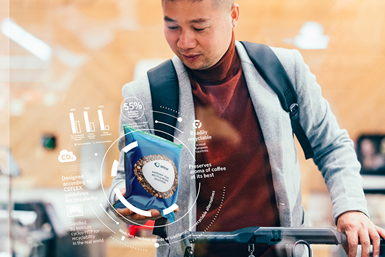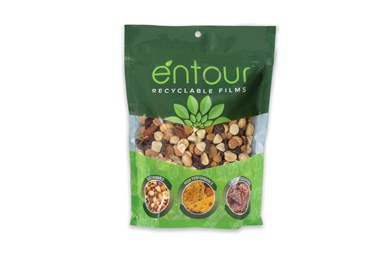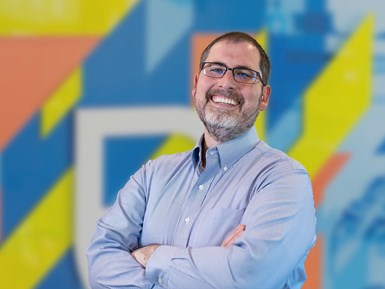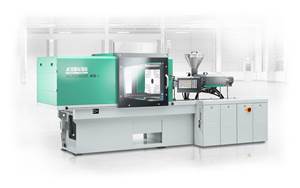Marking 5 Years of the Global Commitment to Plastic Packaging Sustainability
As we mark the fifth anniversary of the Global Commitment, a collaborative effort led by the Ellen MacArthur Foundation and the United Nations, we reflect on its enduring impact in steering the plastic packaging value chain toward a sustainable future. We explore insights shared by initiative signatories, assessing the strides made and recognizing challenges faced, toward the construction of sustainable packaging frame.
For over a decade, establishing a clear definition of sustainable packaging posed a challenge in the industry. However, thanks to the Global Commitment, a common framework has emerged. Launched in 2018 by the Ellen MacArthur Foundation and the United Nations Environment Programme, this initiative has brought together more than 1,000 organizations and 55 countries, with 250-plus companies representing 20% of global plastic packaging.
The Commitment delineates a path to initiate systemic change in the entire plastic economy, ensuring sustainability in packaging. Signatory companies and governments pledge, with standardized metrics, to make 100% of plastic packaging reusable, recyclable or compostable by 2025. Their objectives include increasing postconsumer recycled content, reducing virgin plastic use, adopting reuse models and collaborating to enhance the circularity of plastic packaging.
As the commitment hits the five-year mark, we delve into the accomplishments, persisting challenges and insights gleaned from those actively involved.
Advancements and Ongoing Challenges
The Global Commitment envisions a circular plastic economy where plastic never becomes waste. Thais Vojvodic, manager of the Plastics Initiative at the Ellen MacArthur Foundation, emphasizes that the commitment has introduced unprecedented transparency to companies’ plastic footprints, generating standardized, publicly accessible data. This shared vision and language have transcended borders, with 11 Plastic Pacts globally adopting similar approaches.
A notable success is the doubling of recycled content in packaging by Commitment signatories, reaching a total of 1.5 million tons annually. This achievement equates to avoiding the extraction of one barrel of oil every two seconds — a significant milestone. Moreover, participating recycling companies boosted their postconsumer recycled plastic production by 90%, surpassing the market average of around 25%.
Despite these considerable strides, the Global Commitment has identified three fundamental areas for improvement: transitioning to reusable models, finding recyclable solutions for flexible packaging, and establishing collection and recycling infrastructures supported by extended producer responsibility policies. Vojvodic underscores the urgency of addressing these areas, as only a switch to reuse/refill strategy could have the potential to reduce ocean plastic pollution by over 20% by 2040.
Brand Owners: Drivers of Change
The Clorox Company, PCR and packaging design
Clorox Refillable Cleaners can be refilled up to 30 times and saves up to 80% plastic. Photo Credit: The Clorox Company
The Clorox Company, headquartered in Oakland, California, and renowned for iconic brands such as Brita, Burt’s Bees and Clorox, has positioned sustainability at the forefront of its priorities. Achieving recognition as a top company on Barron’s 100 Most Sustainable Companies list in 2023, the company has been an early adopter in integrating Environmental, Social and Governance (ESG) goals into its reporting. Signatory to the Global Commitment, The Clorox Company’s 2019 corporate strategy, IGNITE, closely aligns with the Commitment, placing emphasis on circular business models and targeting a 25% reduction in virgin plastic usage by 2025.
In pursuit of these goals, the company has substantially increased postconsumer recycled content in its product packaging. Notable examples include EcoClean bottles, which boast a minimum of 25% recycled plastic, and Glad ForceFlex Plus trash bags, incorporating an impressive 50% recovered plastic. Additionally, Burt’s Bees Rescue Lip Balm showcases an innovative hybrid tube crafted from bioresin derived from upcycled potatoes and postconsumer recycled plastic.
Niki King, vice president and head of Sustainability for The Clorox Company. Photo Credit: The Clorox Company
As of 2022, The Clorox Company reached 88% of its goal for 100% recyclable, reusable or compostable packaging. Niki King, vice president and head of Sustainability, highlights ongoing efforts to introduce products that facilitate easy removal of nonrecyclable labels. According to the expert, this measure potentially could unlock the recyclability of around 21 million pounds of plastic annually.
The Clorox Company's commitment extends to product design, exemplified by Clorox Bleach’s 25% more concentrated formula, reducing packaging by approximately 15 million pounds in 2020. The introduction of Clorox Refillable Cleaners, refillable up to 30 times and using 80% less plastic, reflects its dedication to a reuse-refill strategy. Additionally, the Clorox Disinfecting Mist platform offers a nonaerosol format with a reusable trigger and convenient refills. The company continues to lead in sustainable practices, making significant strides in reducing its environmental impact.
Nestlé Actively Searchs for Flexible Packaging Sustainability
Similarly, an industry giant making notable strides in sustainable packaging is Nestlé. The Swiss multinational joined the Global Commitment in October 2019, taking a serious approach to addressing postconsumer plastic waste, with a focus on using materials that preserve food quality, as explained by Juliana Chala Ortega, packaging sustainability coordinator for Mexico. Redesigning to create innovative, recyclable packaging is one of the five pillars of its corporate strategy. Currently, the Mexico operation has ensured that 92% of its packaging is recyclable, nearing its goal of 95% by 2024.
It has transitioned to polyolefins and monomaterial structures. Also, it launched the RE initiative: all its packaging now features a logo with crucial information on material type and recycling instructions, a collaborative effort with the shared value and communications teams to engage consumers.
With Mexico as pilot, Nestlé joined Greenback to build the first advanced recycling plant, aimed to recycle flexible packaging waste. Photo Credit: Nestlé
In the realm of flexible packaging, Nestlé has actively sought technological alternatives for recyclability. Partnering with Greenback, it initiated the first advanced recycling plant with Mexico as a global pilot. Greenback, located in Cuautla, Morelos, collects and integrates waste into circularity using the innovative microwave technology Enval, transforming flexible plastics into pyrolysis oil for recycled content pellets in new food packaging. It is currently working on tests and adjustments, but annually the plant will process waste equivalent to the consumption of 250,000 people.
Beyond this initiative, Nestlé is proactively addressing flexible packaging alternatives through redesign. Juliana Chala Ortega highlights Nestlé's substantial efforts to minimize environmental impact, collaborating with suppliers to formulate resins with barriers comparable to aluminum. Nestlé is fully committed to sustainability and is actively fulfilling its promises, making a positive impact, according to Chala Ortega.
Packaging Manufacturers: Technology and Expertise at Full Speed
Amcor procures for recycling ready solutions
AmPrima is a portfolio of more sustainable packaging solutions, designed to be recycled in existing recycling streams across many European countries. Can include recycled material, and is available in a range of PE or PP formats.
Credit: Amcor
Amcor stands as a global leader in the development and production of packaging across various industries. Joining the Ellen MacArthur Foundation’s Plastics Initiative in 2016, it made history in 2018 by becoming the first global packaging company to commit to making all its packaging recyclable, reusable or compostable by 2025. Since then, Amcor has invested significantly, allocating around $100 million annually to advance research and development for more sustainable, recycle-ready solutions.
In 2023, Amcor reported impressive strides, with 89% of its flexible packaging portfolio featuring a recycle-ready solution and 95% of its rigid packaging, by weight, considered recyclable at scale. Its Sustainability Report FY22 introduced an updated goal to achieve 30% recycled content across its portfolio by 2030. Last year, tangible progress was made with the purchase of approximately 200,000 metric tons of recycled materials and the launch of new solutions containing recycled content.
David Clark, VP of Sustainability, emphasized that Amcor's strategy revolves around delivering top-tier packaging to protect its customers’ products. He highlighted the evolution of its sustainability strategy, transitioning from a focus on reducing environmental impact to driving a sustainable circular economy for packaging.
Addressing flexible packaging sustainability, a crucial aspect of the Global Commitment, Clark underscored the company's concentrated efforts on external collaborations and investments. The primary goal is to enhance access to collection and recycling infrastructure for flexible packaging, ensuring that Amcor’s recycle-ready flexible packaging is not only theoretically recyclable but also practical and scalable in the future.
Amcor's Flexible Packaging celebrated the successful launch of several products containing mPCR (postconsumer recycled materials) in 2023. One notable example, in Latin America, involved collaboration with a customer to introduce two solutions with mPCR — a powder detergent package with 30% mPCR and an overwrap with 13% mPCR.
Clark pointed out, “Our team sourced postconsumer recycled foil for use in coffee capsules, resulting in a reduction of over 21,000 metric tons of CO2e. Another trend that influenced our increased use of recycled content was the continued maturation of advanced recycling (also called chemical recycling) technologies and the broader adoption and scaling of these technologies by major resin suppliers.”
Anticipating increased support for recycling through robust Extended Producer Responsibility (EPR) programs and proposed regulations in initiatives like the UNEP plastic pollution treaty, Amcor envisions a future with enhanced collection and recycling of flexible packaging.
Within the scope of reuse and refill, Amcor offers diverse packaging solutions supporting unique market characteristics. Its excellence shines in refillable beverage containers, particularly durable PET bottles designed for up to 25 uses. The innovation center in Michigan plays a pivotal role in in-house testing of reusable designs, including tracking technology for customer insights into usage data. Furthermore, Amcor actively contributes to reuse models by producing refill-at-home bottles and associated refill pouches.
Berry Global Works Side-by-Side with Customers to Find Solutions
Entour Pouch, made with Entour film, which can be an alternative to multimaterial laminates. Photo Credit: Berry Global
In the same manner, Berry Global, a leading plastic packaging manufacturer, unveiled its Impact 2025 sustainability strategy prior to joining The Global Commitment. Its goals include ensuring 100% of fast-moving consumer goods (FMCG) packaging is reusable, recyclable or compostable by 2025. Robert Flores, Global Sustainability Leader, stated that Berry Global initially aimed to align with major CPG (Consumer Packaged Goods) customers, but has since taken a more proactive approach by signing onto the Global Commitment.
In line with its new goal of incorporating 30% circular plastics in FMCG packaging by 2030, it has developed recyclable offerings for 90% of its FMCG packaging and is actively collaborating with customers to promote the adoption of recyclable solutions.
In 2023, Berry Global communicated with customers, stressing the urgency of meeting 2025 commitments. Solutions offered include replacing multimaterial laminates with Entour films, substituting PVC film with Omni Xtra PE film and incorporating recycled content from its recycling operations, such as CleanStream and Norec.
Berry Global has taken a proactive stance by developing solutions incorporating postconsumer recycled content and securing over 600 million pounds of recycled content annually. It emphasizes infrastructure investments and partnerships globally. The company’s vertically integrated recycling operations produce high-quality recyclate for contact-sensitive PP applications and PE films.
Berry Global achieves virgin plastic reduction through lightweighting (reducing portfolio weight by 1% annually), increasing recycled content and incorporating renewable content. Demand for bio-PP from second-generation bio-feedstocks (wastes and residues that do not compete with food) has seen significant growth last year. The company remains committed to driving sustainable packaging solutions and reducing its environmental footprint.
Graham Packaging Company Overcomes Challenges With R&D
AccuStrength utilizes vertical bands of plastic material that can be adjusted to increase or decrease a bottle’s thickness in a desired location. This technology has produced containers that are up to 11% lighter than traditional horizontal-banded bottles while remaining 100% recyclable. Photo Credit: Graham Packaging Co.
Graham Packaging Co., a leading plastic packaging manufacturer headquartered in Lancaster, Pennsylvania, has evolved from producing motor oil containers in 1970 to a global player attracting Fortune 500 clients and independent businesses alike. Operating plants across North America, Europe and South America, it annually manufactures millions of plastic bottles.
According to Richa Desai, vice president of sustainability, Graham Packaging is dedicated to advancing sustainable solutions and fostering a circular economy for rigid plastics. Its goal is to achieve 100% recyclability for the entire product range by 2025, focusing on the pillars of stop using nonrecyclable products, eliminate nonrecyclable items, and improve with redesign as part of its strategy.
To boost the use of postconsumer recycled (PCR) materials, Graham employs strategies such as operating the Graham Recycling Center (GRC) in York, Pennsylvania, processing over 33 million pounds of #2 HDPE bottles into PCR annually. Additionally, it actively sources PCR from diverse channels, from both mechanical and advances recycling, providing flexibility to customers in achieving voluntary and mandatory sustainability goals. It has obtained ISCC Plus and RMS certifications for traceability.
Richa Desai, vice president of sustainability at Graham Packaging. Photo Credit: Graham Packaging Co.
Graham aims to achieve an average of 20% PCR in its product portfolio by 2025. It recommends PET, HDPE and Polypropylene to customers for their recyclability. To address the 2% that is challenging to recycle, it is collaborating with the National Lubricant Container Recycling Coalition to establish a recycling system for lubricant bottles and working to eliminate the remaining PVC from product lines by 2025.
In 2022, Graham received the Dow Packaging Innovation Silver Award for redesigning Danone’s Danacol yogurt bottle, reducing annual plastic use by 286,600 pounds through label-less design.
In a strategic move to reduce virgin plastic use, Graham invests in lightweighting solutions such as AccuStrength and Active Base. AccuStrength utilizes vertical bands of plastic material that can be adjusted to increase or decrease a bottle’s thickness in a desired location. This technology can maintain or improve a container’s performance while reducing the amount of plastic used.
In fact, AccuStrength’s technology has produced containers that are up to 11% lighter than traditional horizontal-banded bottles while remaining 100% recyclable. On the other hand, Active Base enables the base of the bottle to flex during the fill process and respond to changes in the pressure of the container while cooling. This technology comes in two forms: self-activating base (SAB) and mechanically activating base (MAB). Both technologies offer increased design freedom, while MAB reduces resin weight, producing containers that are at least 20% lighter than existing hot-fill market alternatives and enables the use of up to 100% PCR content.
In the reuse/refill realm, Graham’s REFPET reusable bottles, produced only in Mexico, experience up to 25 reuse cycles, because of a patented bubble texture. Recognized by the Sustainable Packaging Coalition in 2020, these bottles showcase a 47% longer reuse cycle compared to previous generations.
Cross-Sector Collaboration: A Crucial Catalyst for Change
In the past five years, positive strides have been made in plastic sustainability initiatives. However, Thais Vojvodic, of the Ellen MacArthur Foundation, pointed out that the world is still far from solving the problem. At least 80% of the plastic packaging industry is not part of the Global Commitment, and these companies significantly underperform compared to the 20% that signs it. She emphasizes that future progress hinges significantly on political interventions, especially through policies like Extended Producer Responsibility (EPR). She notes, “EPR has proven to make recycling economically viable, offering transparency, efficiency and incentives for upstream solutions such as improved packaging design and reuse.”
Vojvodic underscores the vital role of collaboration among businesses, government policies, and society at large to propel the journey toward a circular and sustainable plastic economy. This call to action is particularly directed at engineers and professionals in training, emphasizing their pivotal role in crafting innovative solutions to contribute to this global crusade and achieve collective goals on a global scale.
Related Content
Pregis Performance Flexibles: In the ‘Wow’ Business
Pregis went big and bold with investment in a brand-new, state-of-the-art plant and spent big on expanding an existing facility. High-tech lines, well-known leadership and a commitment to sustainability are bringing the “wow” factor to blown film.
Read MoreCalculating an Injection Molding Machine’s Carbon Footprint
Arburg has utilized the ISO TS 1467:2018 standard, which determines the greenhouse gas emissions of a product, to help its customers calculate the product carbon footprint (PCF) of its injection molding machines.
Read MoreHow to Optimize Injection Molding of PHA and PHA/PLA Blends
Here are processing guidelines aimed at both getting the PHA resin into the process without degrading it, and reducing residence time at melt temperatures.
Read MoreAdvanced Recycling: Beyond Pyrolysis
Consumer-product brand owners increasingly see advanced chemical recycling as a necessary complement to mechanical recycling if they are to meet ambitious goals for a circular economy in the next decade. Dozens of technology providers are developing new technologies to overcome the limitations of existing pyrolysis methods and to commercialize various alternative approaches to chemical recycling of plastics.
Read MoreRead Next
Lead the Conversation, Change the Conversation
Coverage of single-use plastics can be both misleading and demoralizing. Here are 10 tips for changing the perception of the plastics industry at your company and in your community.
Read MoreWhy (and What) You Need to Dry
Other than polyolefins, almost every other polymer exhibits some level of polarity and therefore can absorb a certain amount of moisture from the atmosphere. Here’s a look at some of these materials, and what needs to be done to dry them.
Read MoreTroubleshooting Screw and Barrel Wear in Extrusion
Extruder screws and barrels will wear over time. If you are seeing a reduction in specific rate and higher discharge temperatures, wear is the likely culprit.
Read More







